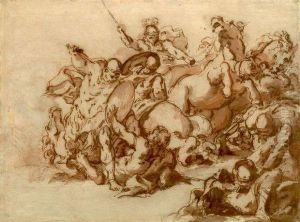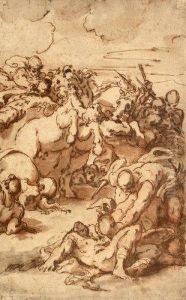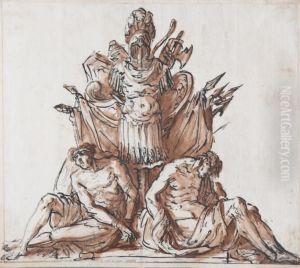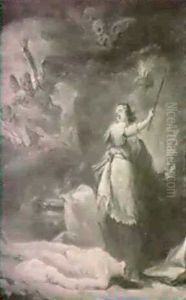Charles Francois De La Traverse Paintings
Charles François de La Travers, sometimes referred to as Charles François de Lattraverse, was a French painter and engraver born in 1726 in Pontarlier, France. Not much is widely known about his early life, but he is recognized as a historical figure in the arts of the 18th century, particularly during the reign of Louis XV.
La Traverse's work was primarily in the Rococo style, characterized by soft colors, fluid lines, and often depicting themes of love, nature, and playful frivolity. He was influenced by the works of Francois Boucher and Jean-Antoine Watteau, both of whom were prominent artists of the French Rococo movement. La Traverse's paintings often featured pastoral scenes, allegories, and mythological subjects, reflecting the tastes of the French aristocracy of the time.
Despite his relatively minor status in comparison to the leading artists of his era, La Traverse was skilled in both painting and engraving. His engravings were well-crafted and contributed to the dissemination of the Rococo style. He was adept at capturing the light-hearted and decorative aspects of Rococo art, although his work did not reach the same level of acclaim as that of his contemporaries.
Little is known about his personal life or training, and his work did not garner significant attention until after his death in 1787. Today, his paintings and engravings can be found in various art collections, and he is appreciated for his contributions to the lesser-known cadre of Rococo artists. His death marked the end of his modest influence on French art, as the Rococo style soon gave way to Neoclassicism towards the end of the 18th century.



